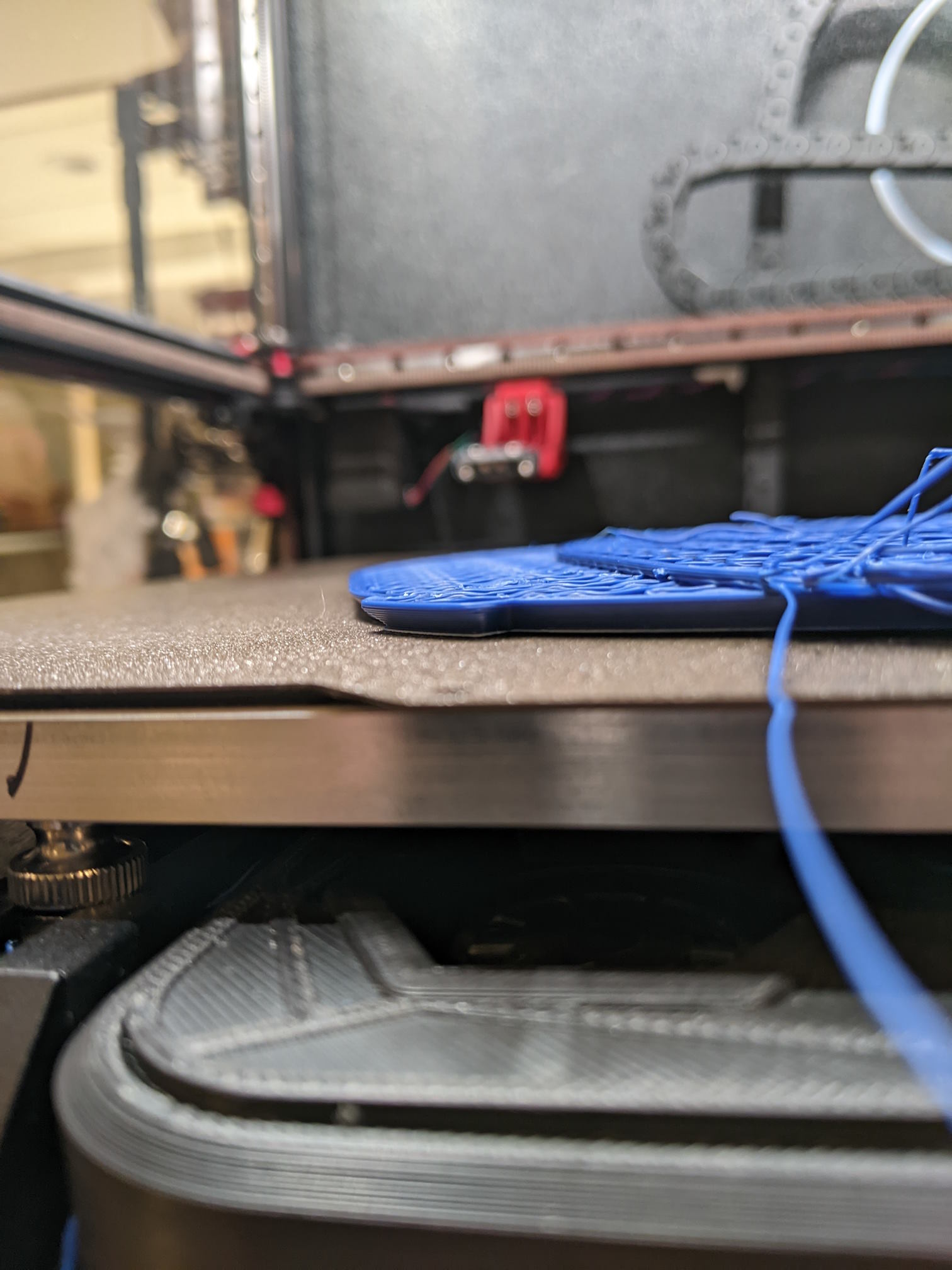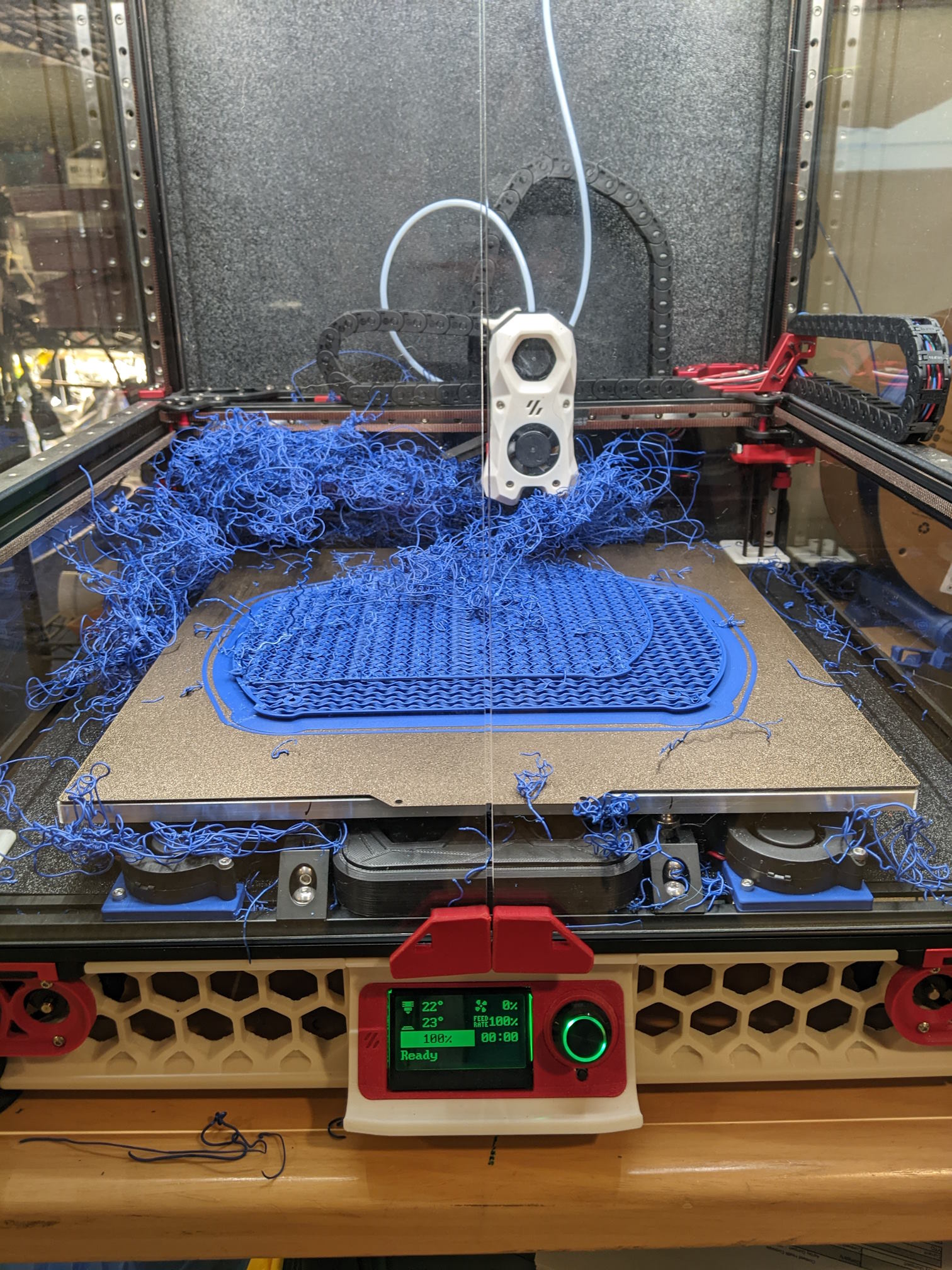3DPrinting
3DPrinting is a place where makers of all skill levels and walks of life can learn about and discuss 3D printing and development of 3D printed parts and devices.
The r/functionalprint community is now located at: or [email protected]
There are CAD communities available at: [email protected] or [email protected]
Rules
-
No bigotry - including racism, sexism, ableism, homophobia, transphobia, or xenophobia. Code of Conduct.
-
Be respectful, especially when disagreeing. Everyone should feel welcome here.
-
No porn (NSFW prints are acceptable but must be marked NSFW)
-
No Ads / Spamming / Guerrilla Marketing
-
Do not create links to reddit
-
If you see an issue please flag it
-
No guns
-
No injury gore posts
If you need an easy way to host pictures, https://catbox.moe may be an option. Be ethical about what you post and donate if you are able or use this a lot. It is just an individual hosting content, not a company. The image embedding syntax for Lemmy is 
Moderation policy: Light, mostly invisible
view the rest of the comments




Generally speaking yes, with bigger nozzles and higher flow rates you will need slightly higher temps- the conduction rate thru the nozzle to the plastic is constant, but you are heating up more plastic and need more energy (thus, higher temps).
You will then also need more part cooling fan as there is more plastic bulk to be cooling.
230 is much much too low for ASA, that stuff is a bit picky. Try 250.
Bah, I typoed. I'm running 250 first layer/240 following layers, which is still lower than what most usually recommend. I was running 235 pretty consistently previously. I'll have to try printing a temp tower with the bigger nozzle. Here's one from the 0.4mm nozzle, granted also with my prior Rapido 1 (RIP).
Below 230 or so, layer adhesion was pretty poor
Above 245 or so, I started getting a lot of very fine/wispy stringing. It basically looked like ultrafine thread and would get itself stuck in my hot end fans.
Thanks to somewhat low chamber temps (350mm^3 printer with only acrylic panels), I've been keeping cooling somewhat low. I recently added some more bed fans to help my bed filter out, so maybe I can try a bit more if it starts becoming an issue.
Even 250 is a bit low for that high of a volume. Are you running a brass nozzle or a hardened/stainless steel nozzle? Steel nozzles will require even more hotend temp due to their low conduction rates. Eg, with the stainless nozzles on a Bambu P1S, I have to run ASA at around 260/262 for higher print speeds.
If stringing is a problem consider increasing the speed of your filament retraction (not distance) You may also want to turn off z-hop. Sounds wild I know, but it does help- by not lifting the nozzle during a rapid move, it "wipes" the nozzle clean as it moves off the part and reduces stringing. Realistically you shouldn't use z-hop at all unless you have a part with a very small cross section that keeps falling over when the nozzle wipes across it. Which ofc, the big print I see in the photo looks like it will have zero stability problems, lol.
@[email protected], replying to you as well here.
This is a hardened steel nozzle. 260 looked a little rough, but 255 looks pretty good. The temp tower got knocked off the bed at 235. It does look like I'll need to bump cooling a touch. Currently working on a retraction tower.
I'll have to give this a go after this retraction tower prints. On the last one I printed there was basically no difference on any of the settings once it got above 0.2mm of retraction. In my time with the rapido, any filament left in the nozzle will ooze out if its left hot but it doesn't string that badly.
Yup, I've run into this realization too - that's part of the reason why I was thinking to have z-hop on for this print
Adding two more bed fans, for a total of 4 (2 loose bed fans, 2 fans in my filter) and getting a bang on first layer (yay klipper_z_calibration) seem to have really helped with warping. I do have some ACM panels that I want to swap on to bump chamber temps up more, but I haven't taken the time to print new magnetic inserts for them yet.
Knock on wood...
I'm definitely going to try the retraction speed (instead of distance) and no z-hop in the morning.
Still try the higher temp, but bump up your retraction to counteract that. I went with the same move for printing silk to get cleaner layers, and it's worked out really well.
Completely agree, but I have no experience with ASA. 22 mm3/s is super high, Id probably start with the highest temp marked on the spool. You can also test your max flow.
On the other hand, you had a layer shift which could happen for other reasons as well
Yeah. ASA basically acts like ABS when printing for the most part, it does need temps to be a tiny bit higher but mechanically everything else is almost entirely the same.
Thanks, I ordered some Polymaker ASA recently, will try it out.
Polymaker ASA is what I'm currently using. You can grab 3 KG spools on Amazon for as low as $50-60 depending on the color (new via prime) if you keep an eye out.
The mix of ASA and a higher flow printer as resulted in a lot more fickle prints though, but this is also true for PETG. Things like EM vary some as a function of speed, so I've found that I need to print all my features at a similar speed.
Total anecdote, I had nothing but problems with Polymaker ASA, which I believe was me trying to run it through too fast. i have a dragon UHF which is, in theory, supposed to be able to do speeds over 30 mm^3/s, first thing I'd try is just slower print speeds and then bump it up from there.
You could also look at a cht nozzle, but as a word of warning, I found the bimetallic ones super fragile, if I recall they want a way lower torque spec than a solid brass or steel nozzle, so they're easy to shear off if you're not careful.
Edit: Leaving the original comment, but I think I may have mixed up for esun abs plus.
What kinds of problems have you had? It's been OK for me. Sure, it's harder to print than PETG but it's also ASA. I do find myself wondering if it's the material or my setup at times though. So far I've run about 7 kg of the stuff. You can find a bunch of it in my post history.
What did you switch to?
I had clogging and stringing issues, which not unexpected when jumping between materials. I had tried it to reduce smell, but ended up not finding much of a difference for me. Prusament ASA was decent but really expensive (duties alone). I probably didn't give it (polymaker) a fair chance, had really good results with the polymaker pla and polyterra pla for some decorative prints. I've definitely had my share of hit and miss with amazon filament, they certainly are way better than I recall them being a decade ago, I do try to dry them now before using and stick with a few brands. I may also be misattributing issues to the polymaker asa, I also bought esun abs+ at the same time, I was building a nevermore max, one of the two just gave me grief and I was mildly annoyed with failed prints.
In terms of what I use now, I have had a lot of luck with Spool3D abs and petg, I sourced a lot of parts from them and found their filament pretty solid (though I'm not sure who supplies it). Recently I've been using Matter3D abs and pla, they have a wood fill pla I liked and their abs printed nicely for me. I'm Canadian so import duties and shipping can be killer, so trying to find a domestic supply was my goal. I definitely still use polymaker, have used a bunch of standard abs and their colour selection is amazing. I don't tend to go for asa over abs, if only for price, looking at amazon, for polymaker 2x1 kg black is $55 cad for abs and $77 cad for ASA, I can almost get an entire third spool for the difference in price.
Thanks for the reply. I haven't had clogging issues with it, but I have had some whispy stringing until I lowered my temp a touch. My preferred filament house (Atomic Filament) looks like they're offering ASA so maybe I'll give them a shot. My biggest issue is warping and I can't imagine that other brands are going to be that different. I finally got great bed plate adhesion but my last print pulled the magnetic surface up.
Thx! Sounds like rly good deal, but 3 kg is not for me honestly. I dont print that much and also my spool holder is too small. 500 g spools would be better for me hehe
Not sure what EM is, but if you meant that some parts of print are shiny and the rest is matte, its probably different flow. Having equal speeds should fix that, I saw a video where they reduce max flow as solution
EM means extrusion multiplier, which is also called flow in some slicers. Shiny vs not is usually a temperature thing.